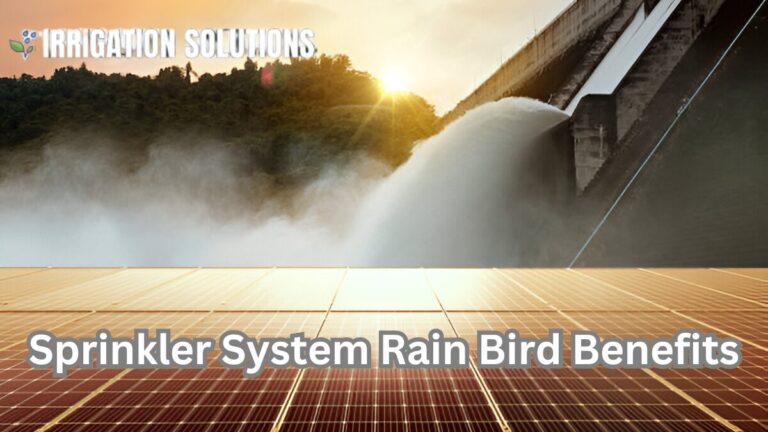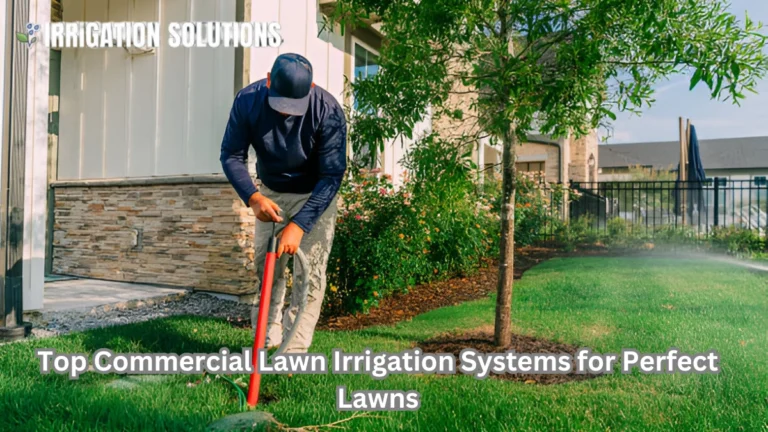best water irrigation system service

Water is the lifeblood of any agricultural or landscaping project. Without an efficient irrigation system, plants suffer from drought stress or waterlogging. Regular water irrigation system service ensures optimal performance, reduces water waste, and extends the system’s lifespan.
This guide dives deep into irrigation system maintenance, troubleshooting, and best practices to keep your system running efficiently year round.
Importance of Water Irrigation System Service
Proper maintenance of an irrigation system leads to:
- Water Conservation Reduces water waste and optimizes distribution.
- Cost Efficiency Prevents costly repairs and water bills.
- Healthy Landscape & Crops Ensures plants get the right amount of water.
- Extended Equipment Life Prevents wear and tear on pumps, sprinklers, and pipes.
“Efficient irrigation is not just about saving water; it’s about sustaining life.” John Kemp, Agricultural Specialist
Common Types of Irrigation Systems
Drip Irrigation
- Uses small tubes and emitters to deliver water directly to plant roots.
- Best for gardens, greenhouses, and row crops.
- Pros: Saves water, reduces weed growth.
- Cons: Requires frequent filter cleaning.
Sprinkler Irrigation
- Sprays water over a large area, mimicking rainfall.
- Best for lawns, golf courses, and large fields.
- Pros: Even water distribution, easy automation.
- Cons: Prone to evaporation and wind interference.
Surface Irrigation
- Water flows overland to crops using gravity.
- Best for flood irrigation in rice paddies and orchards.
- Pros: Low energy use.
- Cons: High water consumption, risk of overwatering.
Subsurface Irrigation
- Delivers water below the soil surface, reducing evaporation.
- Best for orchards and high value crops.
- Pros: Water efficient, minimizes weed growth.
- Cons: Expensive installation and maintenance.
Key Components of an Irrigation System
| Component | Function |
| Pipes & Tubing | Transport water throughout the system. |
| Valves | Control water flow to different zones. |
| Pumps | Increase water pressure when needed. |
| Emitters & Sprinklers | Distribute water to plants. |
| Filters | Remove debris and prevent clogging. |
| Controllers | Automate watering schedules. |
| Moisture Sensors | Monitor soil hydration and adjust watering accordingly. |
Essential Water Irrigation System Services
1. Regular Inspection & Leak Detection
A single leak can waste thousands of gallons of water annually. Common issues include:
- Cracked pipes due to weather changes.
- Leaking valves leading to water pressure loss.
- Clogged emitters affecting water distribution.
Tip: Walk through your system monthly to check for leaks or misaligned sprinklers.
2. Seasonal Maintenance & Adjustments
- Spring: Inspect pipes for winter damage and adjust sprinkler angles.
- Summer: Optimize watering schedules to prevent overwatering.
- Fall: Reduce watering frequency and prepare for system shutdown.
- Winter: Drain water to prevent pipe freezing and damage.
3. Cleaning & Flushing the System
Over time, debris clogs filters and emitters, leading to uneven water distribution.
- Drip Irrigation: Clean emitters with vinegar or a mild acid solution.
- Sprinkler Systems: Flush pipes every three months to remove sediment.
- Filters: Replace or clean filters every season.
4. Checking & Calibrating Water Pressure
- Too High Pressure can damage emitters.
- Too Low Pressure leads to inadequate water distribution.
- Use a pressure gauge to maintain 30-50 PSI for sprinklers and 10-30 PSI for drip irrigation.
5. Upgrading to Smart Irrigation Technology
Modern smart controllers and sensors improve efficiency:
✅ Weather-Based Controllers Adjust watering based on weather forecasts.
✅ Soil Moisture Sensors Prevent unnecessary watering.
✅ Remote Monitoring Apps Manage irrigation from a smartphone.
Troubleshooting Common Irrigation Problems
| Problem | Possible Causes | Solution |
| Uneven watering | Clogged emitters, misaligned sprinklers | Clean or replace affected parts. |
| Low water pressure | Leak in pipes, clogged filters | Check pipes, replace filters. |
| High water bills | Hidden leaks, overwatering | Inspect for leaks, adjust schedule. |
| System not turning on | Faulty controller, electrical issue | Check power supply, reset controller. |
Case Study: How a Farm Reduced Water Waste by 40%
Background: A 50-acre farm in California faced high water costs due to inefficient irrigation.
Problem:
- Old sprinkler system wasted water through runoff and evaporation.
- Manual scheduling led to inconsistent watering.
Solution:
- Upgraded to smart irrigation controllers with real time weather data.
- Installed drip irrigation in high water use areas.
- Conducted monthly system inspections for leaks.
Results:
- 40% reduction in water usage.
- Increased crop yield by 20% due to better hydration control.
- Annual savings of $15,000 in water costs.
Future Trends in Water Irrigation System Service
🔹 AI Powered Irrigation: AI analyzes soil data and weather patterns for precise watering.
🔹 Water Recycling Systems: Treated wastewater is reused for irrigation.
🔹 Drones & IoT Sensors: Monitor moisture levels and detect leaks in real time.
Conclusion
Regular water irrigation system service is essential for saving water, maintaining landscapes, and reducing costs. By inspecting, cleaning, and upgrading your system, you ensure optimal efficiency.
🔹 Key Takeaway: A well-maintained irrigation system conserves water, saves money, and promotes healthier plants.
If you’re looking for professional irrigation system services, consult an expert today to keep your system in top shape!






